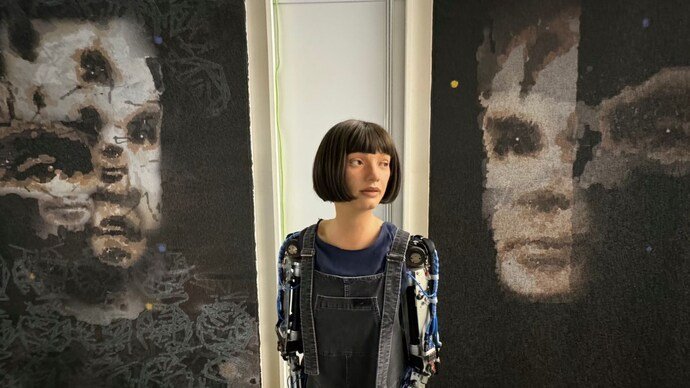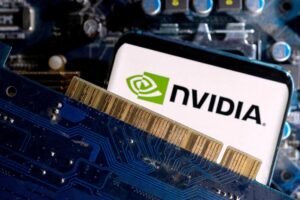First painting by humanoid robot sold at an auction for over $1 million

A humanoid robot artist named Ai-Da made headlines by becoming the first to sell a painting for over $1 million at a Sotheby’s auction, sparking conversations about technology’s role in creativity.
In Short
- Ai-Da, a humanoid robot artist, made history by becoming the first to sell a painting for over $1 million at Sotheby’s
- The artwork, a portrait of AI pioneer Alan Turing, sold far above its original estimate after 27 bids
Imagine walking into an art gallery and spotting a striking portrait of Alan Turing, the brilliant codebreaker and father of modern computing. You take a closer look at the artwork, intrigued by its bold colors and fine details. Yes, you heard that right- a million dollars for a painting created by a robot!
Named after Ada Lovelace, the computer programmer, Ai-Da is the world’s first humanoid AI artist. Oxford-based art dealer Aidan Meller created Ai-Da, equipping her with cameras for eyes, a robotic arm for painting, and an AI-powered brain that allows her to “see” and recreate what’s in front of her. She has made headlines before, but this sale at Sotheby’s New York—one of the most famous auction houses—has put her on the map in a big way.
Named after Ada Lovelace, the computer programmer, Ai-Da is the world’s first humanoid AI artist. Oxford-based art dealer Aidan Meller created Ai-Da, equipping her with cameras for eyes, a robotic arm for painting, and an AI-powered brain that allows her to “see” and recreate what’s in front of her. She has made headlines before, but this sale at Sotheby’s New York—one of the most famous auction houses—has put her on the map in a big way.
So, how does a robot create art, and why does it matter? Being the first, Meller, her creator, sees Ai-Da as a way to start big conversations about technology and its place in our lives. By giving Ai-Da the tools to paint, Meller wants us to think about what it means for machines to “create.”
Ai-Da: The Humanoid AI Artist Challenging the Boundaries of Creativity and Technology
Meller’s choice to paint Alan Turing, a pioneer of artificial intelligence, was no accident. Turing laid the groundwork for AI, so a portrait of him by an AI artist feels like a fitting tribute.
People have mixed feelings about Ai-Da. Although I’m not alive, I can still create art.” This sentence alone had lawmakers wondering if machines are stepping into areas once thought to be exclusively human. Should robots be creating art, and if so, what does that mean for human artists?
But it’s not all serious. Ai-Da’s success is also a sign of just how far technology has come and how fascinated we are with it. Who knows what she’ll create next—maybe sculptures, digital art, or something entirely new?
In the end, Ai-Da’s work isn’t just about the art itself. It’s about the bigger picture—how we, as a society, handle the rise of intelligent machines. And the next time you see a painting, take a closer look. It might just be the first step into a future where humans and machines create together.



 English
English Hindi
Hindi Kannada
Kannada Malayalam
Malayalam Tamil
Tamil Telugu
Telugu











